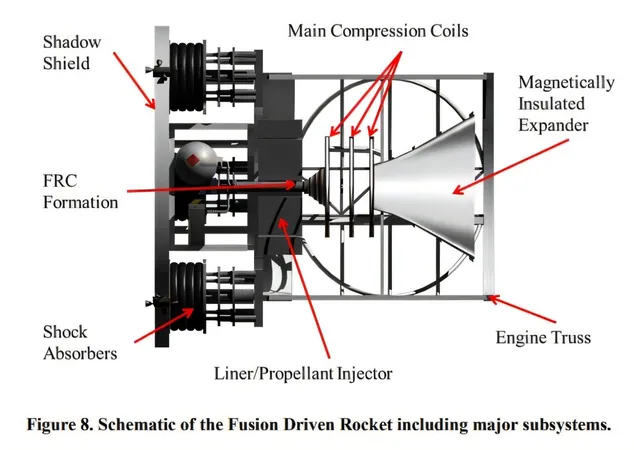
Hidden Worlds: The Search for Additional Exoplanets in Known Systems!
2024-11-05
Author: Emma
Hidden Worlds: The Search for Additional Exoplanets in Known Systems!
In recent decades, the astronomical community has uncovered a stunning reality: exoplanets are far more abundant than anyone previously imagined! To date, we have confirmed nearly 6,000 exoplanets, with evidence hinting at thousands more that await discovery. The majority of these celestial bodies have been identified using the transit method, a technique that measures the slight dimming of a star as an exoplanet passes in front of it. However, other innovative methods have also contributed to this robust catalog of distant worlds.
Among these discoveries, many stars, such as the remarkable TRAPPIST-1 system, are known to host multiple planets—seven Earth-sized worlds in this case. Yet, there's a tantalizing possibility that even in these well-documented systems, additional exoplanets may be lurking, hidden from our current observation techniques. Factors such as their orbital paths, which might not align with our line of sight, or subtle data noise could conceal their presence.
Recent intriguing research published on the arXiv preprint server provides a novel approach to unearthing these elusive planets. Instead of sifting through existing observational data—which may be intricate and noisy—the authors advocate for analyzing the orbital dynamics of known planetary systems. By understanding the gravitational interactions and movements of the planets we already know, we can infer the potential existence of undiscovered companions.
These established exoplanetary systems have existed for millions, if not billions, of years, meaning their orbits have stabilized over time. Researchers posit that in systems where planets are "closely packed," adding new planets could disrupt the delicate balance, resulting in chaotic behavior. Conversely, in "loosely packed" systems, there is a greater chance that additional planets could orbit without destabilizing the entire system.
To illustrate this concept, the authors focused on seven planetary systems identified by the Transiting Exoplanet Survey Satellite (TESS) that contain two known planets. It's statistically improbable for a system to host just two planets, suggesting that these systems may hide more worlds within their reaches. The researchers conducted thousands of simulations, inserting hypothetical planets into these systems to test their long-term stability.
The results were illuminating: while two of the systems were deemed too unstable for additional planets, five showed that they could theoretically support more in a stable manner. This fascinating work implies that many known exoplanetary systems are likely home to yet-undiscovered worlds, expanding our understanding of the complexity of the universe.
As we stand at the precipice of this new era of astronomical discovery, using such innovative approaches is crucial. With data streaming in at an unprecedented rate from advanced telescopes and missions, we must implement effective methodologies to avoid becoming overwhelmed by the wealth of information available. The search for hidden exoplanets continues, and who knows what extraordinary worlds await us in the shadows of distant stars? Stay tuned as we venture further into the cosmos!









 Brasil (PT)
Brasil (PT)
 Canada (EN)
Canada (EN)
 Chile (ES)
Chile (ES)
 Česko (CS)
Česko (CS)
 대한민국 (KO)
대한민국 (KO)
 España (ES)
España (ES)
 France (FR)
France (FR)
 Hong Kong (EN)
Hong Kong (EN)
 Italia (IT)
Italia (IT)
 日本 (JA)
日本 (JA)
 Magyarország (HU)
Magyarország (HU)
 Norge (NO)
Norge (NO)
 Polska (PL)
Polska (PL)
 Schweiz (DE)
Schweiz (DE)
 Singapore (EN)
Singapore (EN)
 Sverige (SV)
Sverige (SV)
 Suomi (FI)
Suomi (FI)
 Türkiye (TR)
Türkiye (TR)
 الإمارات العربية المتحدة (AR)
الإمارات العربية المتحدة (AR)